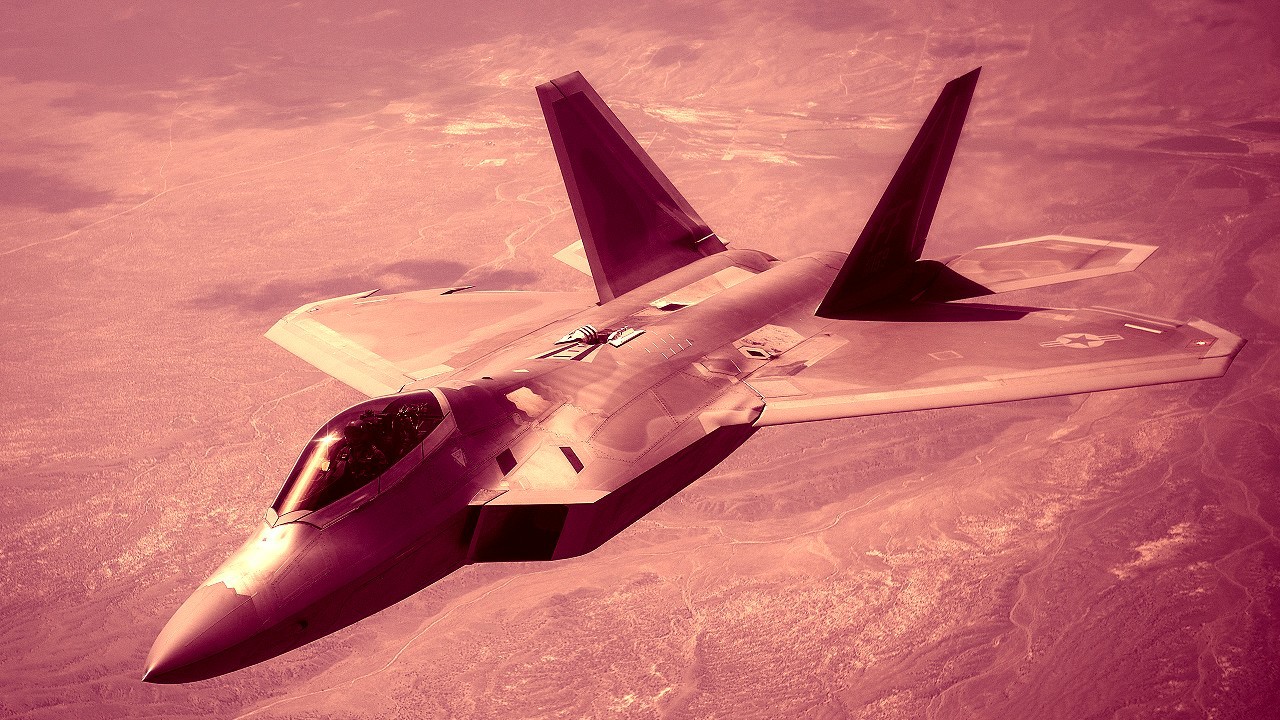ByMaya Carlin
Published

No F-22 Raptor Retirements? The U.S. House and Senate Armed Services Committees are working to mandate the Air Force to upgrade its fleet of F-22 Raptor fighter jets. The Air Force sought to retire the older-model airframes, pointing to the fleet’s expensive maintenance and diminishing value to justify its rationale. Chairman of the House Armed Services Committee (HASC) released plans on June 20 to upgrade the Raptor’s in its latest version of the 2023 National Defense Authorization Bill.
Responsible for the funding and oversight of the Department of Defense (DoD) and the U.S. Air Force, the HASC provides legislative oversight for the military. The Senate Armed Services Committee (SASC) released similar rhetoric this week, also calling for the prohibition of retiring the F-22 fighters.
F-22s: Something Republicans and Democrats Agree On?
Preserving the F-22 fleet in the Air Force’s arsenal is reportedly a bipartisan, consensus view of the HASC. According to a staff member, the Committee’s rationale behind its push to save the Raptors is based on “risk mitigation.” They added that, “When we let the Air Force curtail the program back in 2010 at 187 airplanes at the time, they told us that the training capacity would always be available to meet contingency requirements, if and when needed, along with the 234 F-15Cs.
Now that the Air Force is retiring all their F-15Cs, they’ve cut the buy in half for F-15EX, [the Next Generation Air Dominance program] has slid further to the right than what they originally told us, and now they want to reduce their F-22 capacity. We think there’s significant risk in meeting future air superiority requirements. And so we’re holding the Air Force accountable to their commitment to have the training-coded jets combat capable.”
The Pentagon released a budget proposal earlier this year that incorporated the Air Force’s plan to retire the Raptors. According to The Drive, the proposal detailed that 33 Block 20 jets would be retired, reducing the fleet in size to approximately 153 air frames. The jet’s expensive upkeep combined with its limited training role drove the Air Force’s decision. The F-22s are currently used primarily for training uses and not in combat roles. Advancing the older Raptors would cost nearly $1.8 billion over the next eight years according to the Air Force. Instead, the branch outlined how those funds could be better allocated to funding the “frontline Raptor force” as well as the new F-35 stealth fighters.
F-22 Raptor, a History
Initially designed at the height of the Cold War, the American F-22 Raptor formally entered service with the U.S. Air Force in 2005. As the world’s first fifth-generation fighter, the Raptor’s advanced attributes arguably make it the most sophisticated stealth fighter in existence. The Raptor features supermaneuverable flight characteristics, including a smaller radar cross-section and twin thrust-vectoring F119 turbofan engines. The Raptor’s air superiority and uniqueness in the fighter realm make it a formidable asset for the Air Force.
Since the Raptor’s debut, U.S. adversaries have worked tirelessly to create their own fifth-generation fighters. China’s J-20 and Russia’s Sukhoi Su-57 pose significant threats to America’s air superiority, making the preservation of the one-of-a-kind F-22 Raptor even more critical.
Maya Carlin is a Middle East Defense Editor with 19FortyFive. She is also an analyst with the Center for Security Policy and a former Anna Sobol Levy Fellow at IDC Herzliya in Israel. She has by-lines in many publications, including The National Interest, Jerusalem Post, and Times of Israel.
In this article:F-22, F-22 Raptor, U.S. Air Force
\
WRITTEN BY Maya Carlin
Maya Carlin is an analyst with the Center for Security Policy and a former Anna Sobol Levy Fellow at IDC Herzliya in Israel. She has by-lines in many publications, including The National Interest, Jerusalem Post, and Times of Israel.
Rolls-Royce unveils turbogenerator technology for hybrid aircraft
The company hopes the appliance will extend the range of flights powered by sustainable fuels
:quality(70)/cloudfront-eu-central-1.images.arcpublishing.com/thenational/RY7HD4IFMNED7EFF3BY37X2T4U.jpeg)
Rolls-Royce has unveiled new turbogenerator technology, opening up the potential for low-emission aircraft to fly longer routes.
The technology includes a small engine designed for hybrid-electric applications and will serve as an on-board power source that offers scalable power.
The company hopes the appliance will eventually be used to extend the range of flights powered by sustainable aviation fuels.
Rolls-Royce said the new technology, being developed by experts in Germany, Norway and Hungary, will serve a power range between 500kW and 1,200Kw. Some funding for research and development has been provided by the German government.
The turbogenerator will recharge batteries after take-off or power propellers directly, enabling aircraft to switch between power sources in flight.
Rob Watson, president of Rolls-Royce Electrical, said the addition of the latest technology will enable more passengers to travel on low-emission aircraft.
“Rolls-Royce will be the leading provider of all-electric and hybrid-electric power and propulsion systems for advanced air mobility and will scale this technology over time to larger platforms,” he said. “I would like to thank the German government for their support. As part of our strategy, we are looking at offering the complete sustainable solution for our customers.
“This means extending routes that electric flight can support through our turbogenerator technology. This will advance hybrid-electric flight and mean more passengers will be able to travel further on low to net zero emissions aircraft.”
Last year, Rolls-Royce unveiled its plan to achieve net zero carbon emissions. The company has committed to ensuring all new products will be compatible with net zero operation by 2030, and the entire range of products will be compatible with net zero by 2050.
No comments:
Post a Comment